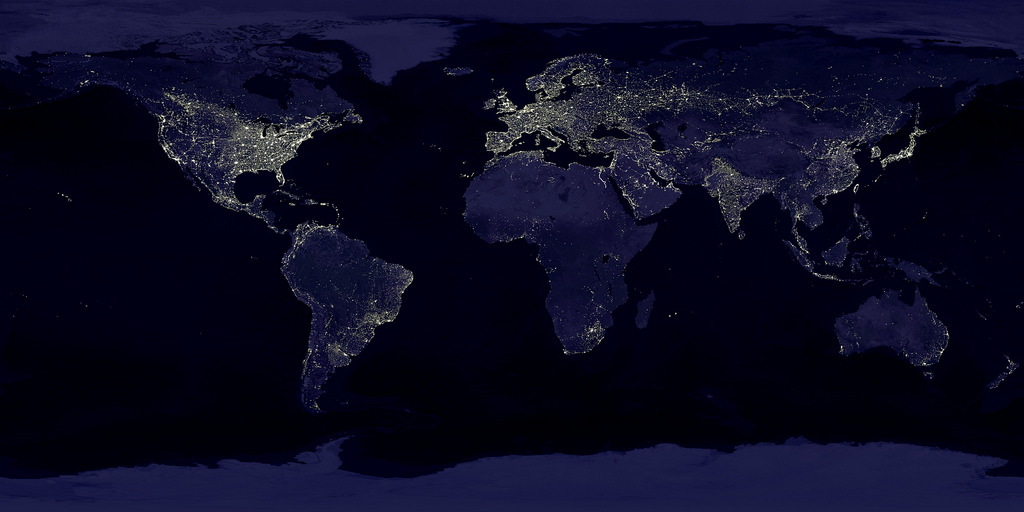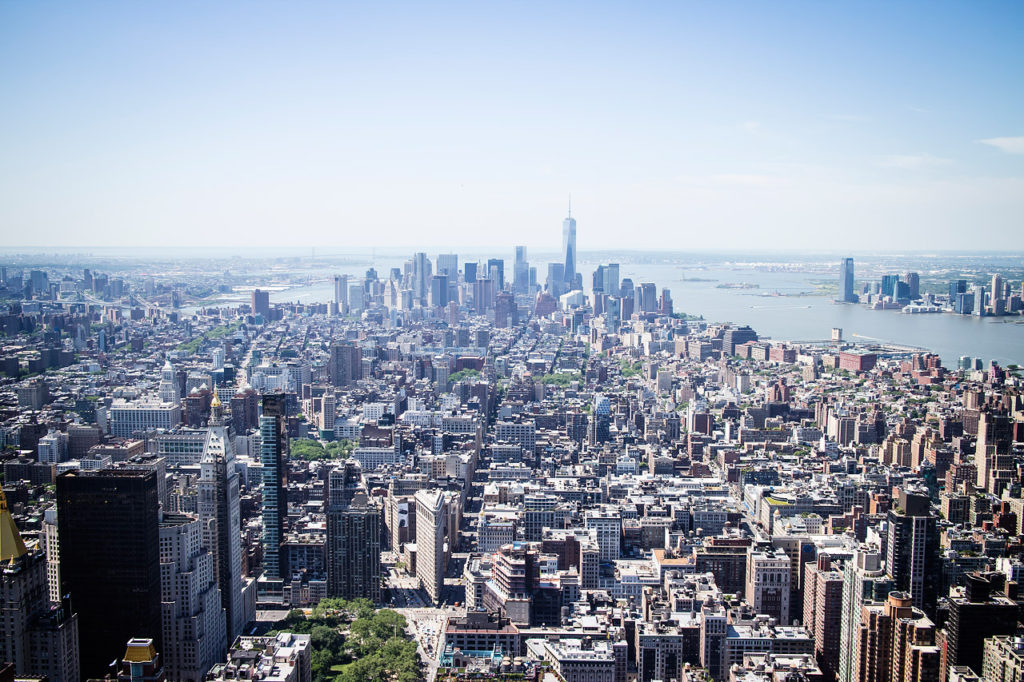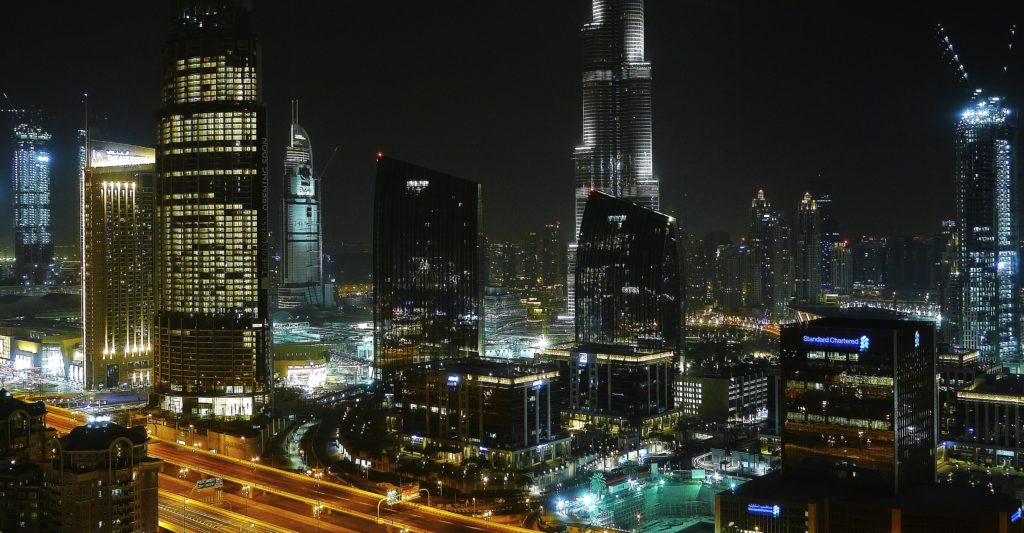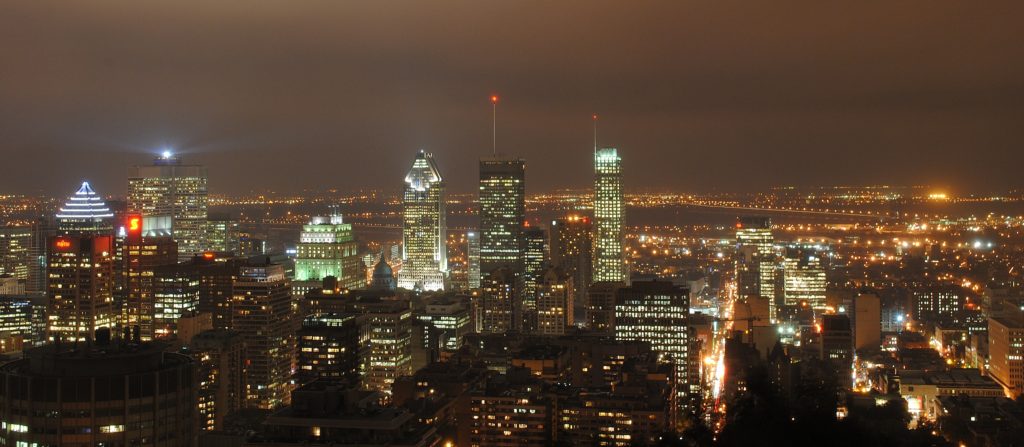Deconstructing the Global City
 https://flic.kr/p/7FHvkj
https://flic.kr/p/7FHvkj
In September of 2017, online retailer Amazon announced that it would be expanding its operations by opening a second headquarters. Within weeks, dozens of cities across Canada and the United States rushed to submit proposals, enamoured by the possibility of hosting one of the world’s top 10 companies within their borders. As cities attempted to out-do each other, each proposal became more outlandish than the last. Calgary, for example, on a billboard in Seattle, offered to “fight a bear” for Amazon. Tucson, on the other hand, personally gifted Amazon CEO Jeff Bezos a 6-metre-tall cactus. These humorous proposals, however, distract from some of the more concerning bids; Chicago, for example, offered to return 50-100% of all income taxes payed by Amazon employees back to Amazon itself. Fresno, on the other hand, would allow Amazon to have unprecedented control over the city’s urban planning, allowing the corporation direct infrastructure for its own benefit.
If selected, Amazon promises its potential host city 50,000 high-paying jobs. However, particularly for smaller cities, the possibility of hosting the Amazon HQ2 presents a novel opportunity to increase their prominence on the world stage. Thus, by opening the door to Amazon, cities around North America seek to jump-start their economies, hoping to cause a snowball effect that would lead to more corporate investment and growth.
The Amazon story serves as a microcosm for larger trends. Around the world, urban centres seek to become global cities, or hubs of commerce and trade. Since 1998, the Globalisation and World Cities (GaWC) think-tank has produced one of the more popular metrics for ranking global cities. In their annual reports, the GaWC rank cities as either alpha, beta or gamma-level world cities. These rankings are determined by the strength of a city’s accounting, advertising, finance and legal service sectors. The GaWC then accounts for the number of connections between firms, concluding that cities with the most international business ties are “global”.
Other competing metrics have also grown in popularity throughout the 21st century, including the Foreign Policy’s Global Cities Index, Global Power City Index, and The Economist’s Global City Competitiveness Index. Despite some small differences between them, all of these indices emphasize the importance of a city’s business climate and propensity for economic development. Thus, some critics have levelled that these indices fail to account for how liveable a city is – in other words, how affordable, sustainable and accessible a city is to live in. Additionally, global city metrics tend to focus on the benefits for firms, but fail to evaluate the direct effect of being a global city on inhabitants. Furthermore, the World Economic Forum has shown that there is a direct correlation between the strength of a city’s connections to the global market, and its level of income inequality. This therefore begs the question: what happens when a city goes global, and is it worth it?
The Case of New York – Growth for the Few
New York has for decades been the financial capital of the United States. Given the city’s importance as a centre for international commerce, it may come as no surprise that New York has received the highest possible ranking of Alpha++ in every GaWC study since the organization’s inception. Only one other city, London, has received the same honour.
However, The Big Apple’s illustrious high rises hide a brutal reality; according to the 2010 US Census, the top 5% of Manhattan residents on average have an income 88 times higher than the bottom 20%. According to the New York Times, this makes New York the most extreme case of income inequality in the United States. Meanwhile, a 2014 study showed that 45.6% of New Yorkers live at or close to poverty, struggling to make ends meet. The city has become increasingly unaffordable for working families, with rents skyrocketing by 75% between 2000-2012. This, combined with decreasing economic opportunities and fiscal crises, has led to the highest levels of homelessness in New York City since the Great Depression, with homeless shelters seeing an 82% increase in usage in the last 10 years. Homelessness also takes on a racial dimension in New York, with African Americans and Latinos disproportionality represented in the city’s homeless population.

Meanwhile, the city has been undergoing its largest boom in office tower construction in three decades. Formerly working-class and industrial neighbourhoods have been gentrified, making way for luxury condominiums and tourist attractions in Brooklyn and Manhattan’s far West Side. The result has been the forcing-out of small local businesses, alongside rents becoming increasingly unaffordable. Elsewhere in the city, new public infrastructure projects, like the Brooklyn-Queens connector streetcar, promise to increase the mobility of individuals living in public housing along the boroughs’ waterfront, and has been personally promoted by Mayor Bill de Blasio. Others in the city, however, including academics and long-time residents, have opposed the project. In their view, the streetcar is a means of gentrifying low-income neighbourhoods. There appears to be a good deal of truth to these concerns, as the proposal released by the city of New York revealed that the new infrastructure project would be paid for in part by increased property taxes along the streetcar’s route, likely forcing out poorer residents.
The importance of New York on the global economy cannot be understated. Its status as a global city and financial hub make it a desirable place to live for many up-and-coming professionals. The gentrification of neighbourhoods – like the lower East Side of Manhattan, or Williamsburg in Brooklyn – further attracts this demographic. However, for a large portion of New York’s historic population, the city has become increasingly unlivable. Thus, what good is it being a global city, if long time residents can no longer afford to live in a place?
The Case of Dubai – The Exploitation of Migrant Labour
In 2016, Dubai was listed as an Alpha+ city by GaWC, only one step below New York City. However, it had not always been so prominent: 10 years ago, Dubai was considered a Beta+ city. 18 years ago, Dubai was classified as a Beta city. Looking at this data alone, it is clear that Dubai has undergone a huge economic boom in 21st century. Economic statistics tell a similar story. In 2014, for example, the Brookings Institute released a report which stated that Dubai was leading its nation’s economic growth. Thus, whereas GDP per capita in 2014 rose 1.6% in the United Arab Emirates over previous years, in the city of Dubai, the rate increased to 4.5%. In 2015, Dubai’s GDP was 105.6 billion USD, rivalling or surpassing the economies of entire Arab states, including Lebanon, Libya and Jordan. Furthermore, despite a widening disparity between rich and poor citizens, leaders of Dubai and the United Arab Emirates have done their best to quell class tensions, with massive subsidies and welfare programs keeping families afloat.

However, 83% of the city’s population are foreign born non-citizens. Of this migrant work force, a large portion have come to work blue-collar and service-sector jobs. These workers do no benefit from many of the luxuries afforded to Dubai’s citizenry. With limited or absent labour regulations for non-citizens, human rights violations against these workers have become routine. Dubai’s taxi drivers for example, usually non-citizens, work anywhere from 14 to 18 hours a day, seven days a week. Furthermore, despite the practice being outlawed in 2002, some Dubai employers have continued to retain the passports of their workers, effectively trapping them in the country. These abhorrent labour conditions have led to a disproportionate number of suicides amongst migrant workers in Dubai, an issue that has been met with apathy by many Emirati nationals. The situation has become so grave that Human Rights Watch has stated that Dubai’s migrant workers – mostly of Chinese, Pakistani or Indian origin – are treated as “less than human”.
Thus, Dubai’s rush to increase its prominence and become a truly global city has come at tremendous human cost. The city’s unprecedented growth rate has mainly benefitted the few actual citizens of Dubai. Meanwhile, the city’s low-skilled migrant population, a sizeable portion of the city’s population, frequently find themselves in exploitative labour contracts. Thus, in the case of Dubai, the humanitarian and moral concerns directly associated with being a global city cannot be ignored.
The Case of Montreal – Broken Promises and Decline
Previous sections of this article have focused on alpha world cities – urban centres that dominate the global economy. It might come as a surprise to see Montreal discussed in this article. Although the city is no doubt important to the economy of Canada, it pales in comparison to Toronto, which is itself considered an Alpha World City by the GaWC. For the better part of two decades, Montreal has hovered between Beta and Beta+, indicating a moderate level of interconnectedness to the rest of the world. There is therefore value in evaluating Montreal as a Beta world city, as doing so will present a case for what can happen when a smaller city attempts to “put itself on the map”.
Unlike the other two cities discussed that have “made it” in the world, the history of Montreal has been marked by repeated attempts to become something greater. In 1967, Montreal hosted Expo 67, a world fair that jumpstarted the city’s urban development and cemented the city’s international reputation. However, planners were overly optimistic about the effect the Expo would have. The city entered economic decline shortly after the expo, as political instability in the province of Quebec encouraged firms to leave the city, and globalized production chains crippled the city’s once-powerful textile industry. Thus, it was not long afterwards that Toronto surpassed Montreal in both population and economic capacity. In the words of one professor at the University of Montreal, “Expo was magic. Our mistake was to imagine that the future would be paradise. In a way, Expo was the beginning, but it was also the end.”

Montreal nonetheless attempted to build on the success of Expo 67, hosting the Olympics in 1976. The end result was one of the least profitable Olympics in history, putting the city $1.5 billion in debt. It took Montreal 30 years to pay off the games, which then-Mayor Jean Drapeau had promised would cost the city nothing. The next several decades were plagued by construction and corruption scandals, rocking inhabitants’ faith in their city. This culminated in 2011, when the Quebec government launched the Charbonneau Commission, an official investigation into construction scandals in the city. The end result was a political crisis for Montreal, with two subsequent Mayors, Gerald Tremblay and Michael Applebaum, stepping down as a result of charges put forth by the Commission.
Thus, in part due its attempts at becoming a more prominent city, Montreal would descend into financial and political crises. The result was shaken public confidence in government institutions. Additionally, in 2015, Montreal posted the slowest growth rate amongst Canada’s major cities. It is therefore clear that in the case of Montreal, attempts at increasing the city’s visibility on the world stage have seldom translated to direct benefits for the city’s population.
Conclusion – What is a Global City?
Being a Global City might not always benefit its residents. In the case of New York, it was shown that Global Cities are amongst the most economically unequal in a nation. What’s more, new professionals who come into a city often displace historic residents, forcing out citizens through various gentrification and urban renewal projects.
Dubai, although a unique case, demonstrates the worst of what it means to be a global city; although its citizens can often appear to lead comfortable and wealthy lives, the reality is much darker. Non-citizens, who comprise a huge portion of the city’s population, live extremely precariously, often trapped in abusive labour contracts.
Montreal, on the other hand, has tried on several occasions to increase its prominence on the global stage. However, attempts at economic development in the late 1970s led to decades of construction and political scandals, making residents weary of any future attempts at becoming a Global City.
These darker sides of being a global city therefore highlight a significant flaw with GaWC’s and other NGOs’ metrics – a city’s prominence is only defined by the number of services it offers, ignoring other factors like inequality, labour rights and the costs of living in a city. Nonetheless, cities around the world continue to attempt to increase their status, often at extreme costs.
The cases of New York, Dubai and Montreal therefore should serve as cautionary tales for all cities. As cities seek to grow and expand their economies, it must not be forgotten that at the end of the day they are shared spaces. Thus, any city that seeks only economic growth and global prominence, without accounting for the needs of its inhabitants, will suffer in the long run.
Touching, finally, on the contemporary issue of Amazon’s second global headquarters, the lessons learnt abroad should not be forgotten: what good is economic growth and development if inhabitants of a city are left impoverished, exploited, and politically disenfranchised?
Christopher is a second-year political science student at McGill University. He is to be published in the McGill International Review’s 2018 print edition, to be released in April 2018.
